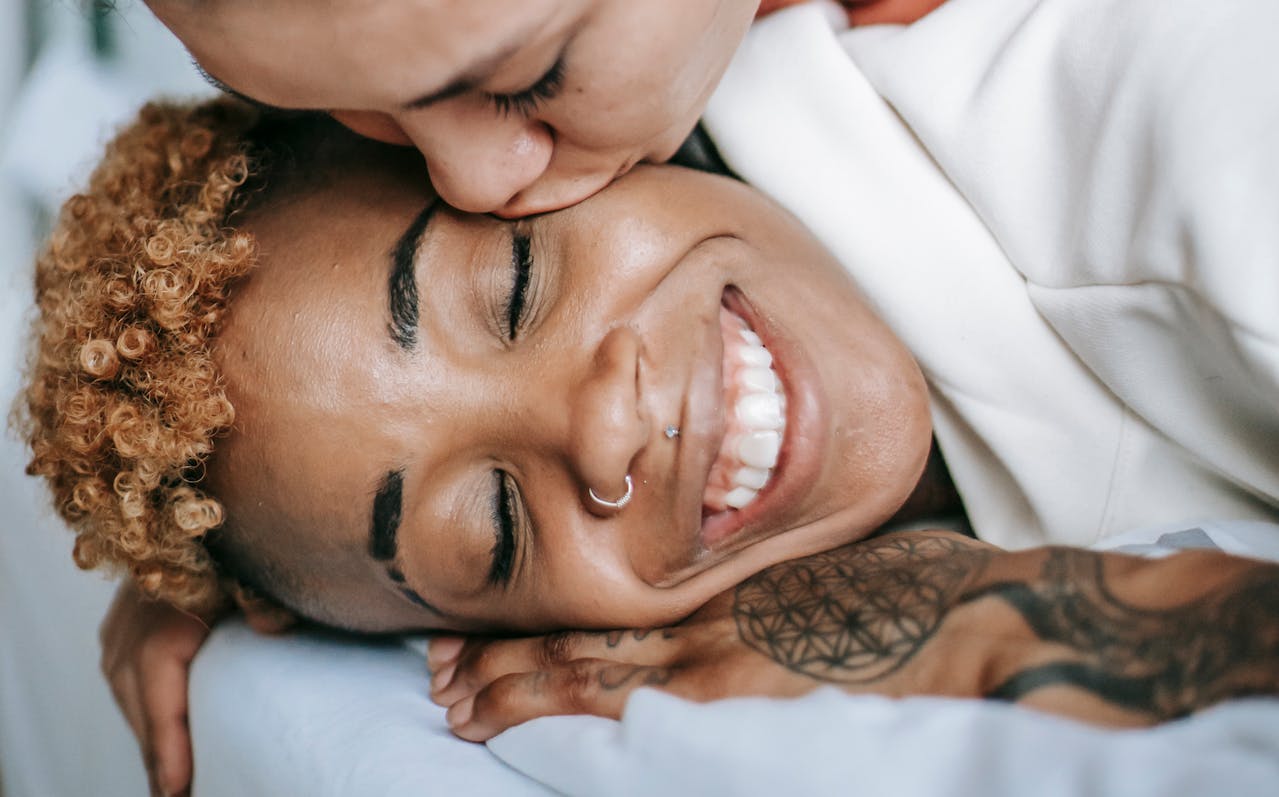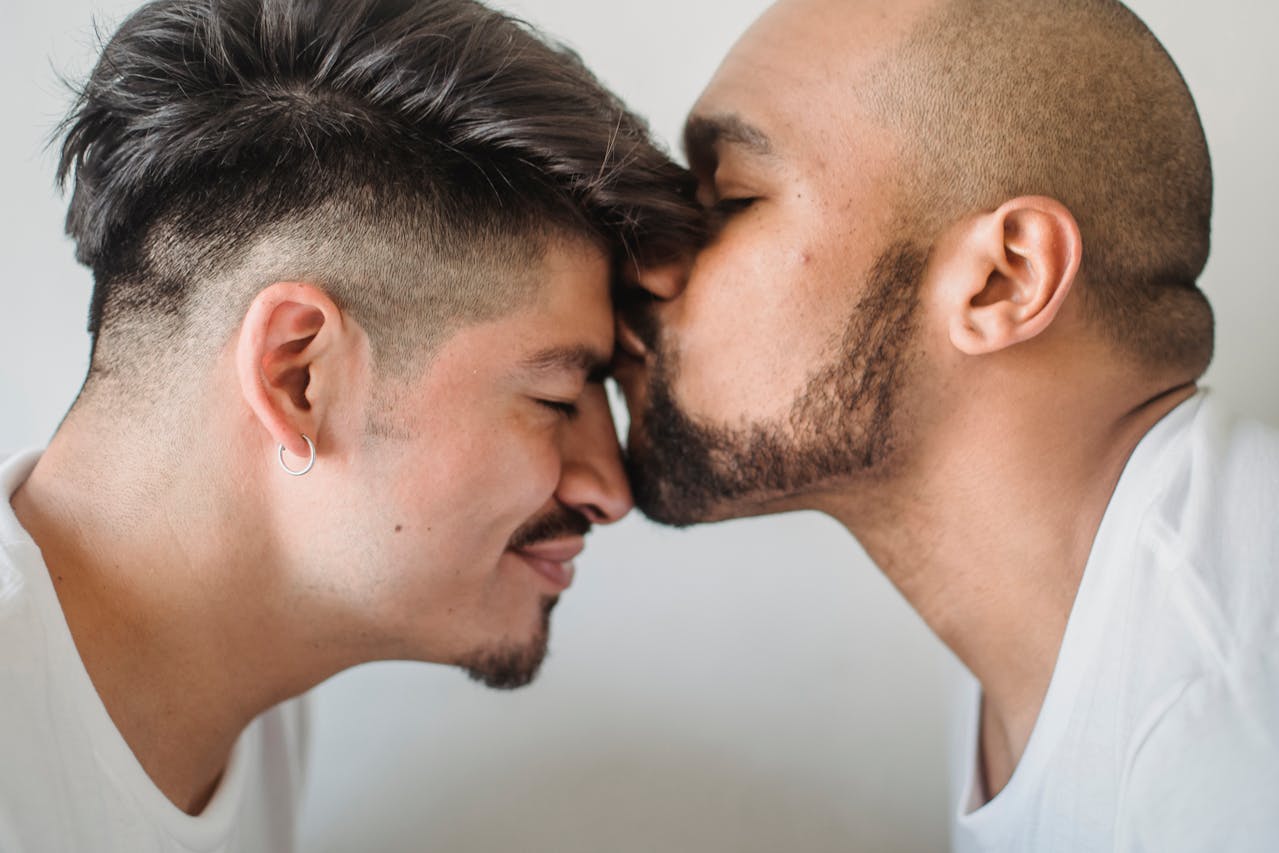In the world of ethical non-monogamy (ENM), one-sided open relationships often exist in a complex and delicate space.
For some people, these relationships are liberating and offer a chance for personal exploration, while others may find them emotionally challenging, as jealousy, resentment, and insecurity can arise.
Navigating this dynamic successfully requires open communication, emotional intelligence, and a willingness to adapt and grow together as a couple, while carefully managing emotional energy.
If you find yourself in a one-sided open relationship, it’s important to approach it thoughtfully, ensuring that both partners feel heard, supported, and respected.
Here’s how you can navigate a one-sided open relationship and maintain your connection while staying true to your own needs and boundaries.
Key Takeaways
- Open and honest dialogue helps both partners understand their needs and boundaries in a one-sided open relationship.
- Jealousy and insecurity may arise, but addressing them through self-awareness and reassurance can strengthen the bond.
- Relationship dynamics, including boundaries and desires, may evolve over time, and it’s important to remain flexible and communicate changes.
What is a One-Sided Open Relationship Structure?
A one-sided open relationship is a form of ethical non-monogamy (ENM) in which one partner is allowed to explore romantic, sexual, or emotional connections with people outside the primary relationship, while the other partner prefers or chooses monogamy.
In this arrangement, one partner may be comfortable with dating, sex, or intimacy outside of the relationship, while the other remains exclusive or monogamous, similar to traditional monogamous relationships.
This type of dynamic can be a result of varying desires, comfort levels, or personal needs that don’t align in traditional monogamy.
For instance, the monogamous partner might feel content with the idea of only one partner exploring other connections, while the open partner may feel fulfilled by experiencing a variety of relationships and connections.
It is crucial to recognize that a one-sided open relationship is not inherently right or wrong; it’s about whether both partners are on the same page and whether the dynamic fits their relationship values.
However, this setup requires ongoing communication and adjustment as both partners navigate the inevitable challenges that may arise.
For some, this is considered a half-open relationship or half-open marriage, depending on the context and the boundaries set by both parties.

Understand the “Why” Behind the Dynamic
Before committing to a one-sided open relationship, both partners should ask themselves why they’re engaging in this arrangement.
What is motivating the desire for openness? Is it a matter of personal growth, sexual exploration, or a compromise to accommodate differing desires?
Understanding the underlying motivation behind the arrangement can help both partners assess whether the dynamic is truly compatible with their values, emotional needs, and long-term goals.
For example, one partner might desire sexual variety or the ability to explore different aspects of their identity due to varying levels of sexual desire, while the other might feel emotionally satisfied but also inclined to maintain a traditional monogamous relationship.
Sometimes, partners may agree to a one-sided open marriage or a one-sided open relationship to keep the peace or prevent feelings of guilt, but deep down, it may not actually align with what they want.
By openly discussing the “why”, partners can prevent misunderstandings and create a safe space for addressing any hidden fears or needs that might otherwise go unspoken.
Benefits of One-Sided Open Relationships
A one-sided open relationship can offer several unique benefits that contribute to the overall health and satisfaction of the couple involved. Here are some of the key advantages:
Increased Emotional Intimacy: Allowing one partner to explore their desires outside the primary relationship can lead to deeper emotional connections within the relationship. This openness can foster a sense of vulnerability and trust, enhancing emotional intimacy between partners.
Improved Communication: One-sided open relationships necessitate open and honest communication. Discussing boundaries, feelings, and experiences can strengthen the relationship, making it more resilient and adaptable to change.
Increased Trust: When both partners are aware of and agree to the relationship structure, it can foster a deeper sense of trust and commitment. Knowing that your partner is transparent about their actions and intentions can build a solid foundation of trust.
Personal Growth: Exploring desires and needs outside the relationship can lead to significant personal growth and self-discovery. This journey of self-exploration can help individuals understand themselves better and bring new insights into the primary relationship.
Variety and Excitement: A one-sided open relationship can introduce new experiences and excitement, keeping the relationship dynamic and engaging. This variety can help maintain the spark and prevent the relationship from becoming stagnant.
By embracing these benefits, couples can create a more fulfilling and dynamic relationship structure that meets both partners’ needs.
Set (and Revisit) Boundaries
Boundaries are the foundation of any ethical non-monogamous (ENM) relationship, but they are even more crucial in a one-sided open relationship.
Both partners must establish clear and mutual boundaries that define what is acceptable and what is not in terms of sexual and emotional involvement with others, including romantic or sexual connections.
This could include physical boundaries, such as whether sexual contact with outside partners is allowed or limited to certain activities.
It might also involve emotional boundaries, like whether it’s acceptable to form deep emotional connections or share intimate moments outside the primary relationship.
Boundaries must also address potential issues of time management—how much time is spent with other partners, how much time is spent together as a couple, and how often communication will occur regarding outside relationships.
It’s important to keep in mind that boundaries should never be set in stone. As the relationship progresses, these boundaries might need to be adjusted based on each partner’s evolving comfort levels.
Revisiting boundaries regularly is essential to ensure both partners feel safe and valued.
Open and honest communication about redefining boundaries can help prevent misunderstandings and strengthen the bond between both partners.
Some people may look up topics like one-sided open relationship rules or even engage in one-sided open relationship Reddit discussions to better understand how others manage similar situations.

Manage Jealousy (Because It’s Inevitable)
Let’s face it—jealousy is a normal and often inevitable emotion in one-sided open relationships.
When one partner is allowed to explore connections outside the relationship, the other might feel anxious, insecure, or even jealous about the potential emotional or sexual connections their partner is building with other women.
Instead of ignoring or repressing feelings of jealousy, it’s essential to acknowledge them and understand what they signify.
Jealousy can stem from a fear of being left behind, a lack of emotional reassurance, or concerns about losing one’s partner to someone else.
Ask yourself: What does this jealousy mean for me? Is it fear of rejection? Is it rooted in insecurity about your partner’s desires, or are there deeper trust issues that need addressing?
Once you identify the root of the jealousy, it becomes much easier to address it constructively.
In these situations, communication is key.
You may need to express your feelings to your partner and seek reassurance to help soothe your insecurities. This can also involve vulnerability, where both partners can discuss their fears and concerns without fear of judgment.
Instead of letting jealousy fester, which can lead to resentment, it’s important to talk through it openly and understand how to meet each other’s needs in healthy ways.
Safety and Protection
Safety and protection are paramount in any open relationship, and a one-sided open relationship is no exception. Here are some essential tips to ensure the health and well-being of all parties involved:
Practice Safe Sex: Always use protection and get regular STI tests to ensure the health and safety of everyone involved. This practice is crucial for maintaining physical health and preventing the spread of infections.
Set Boundaries: Establish clear boundaries and rules for the relationship. This includes defining what is and isn’t acceptable in terms of sexual and emotional involvement with others. Clear boundaries help prevent misunderstandings and ensure both partners feel secure.
Communicate Openly: Open and honest communication is the cornerstone of a successful open relationship. Regularly discuss your desires, needs, and boundaries with your partner to ensure you are both on the same page.
Respect Each Other’s Boundaries: It’s essential to respect each other’s boundaries and decisions, even if they differ from your own. Mutual respect helps maintain trust and prevents feelings of resentment.
Prioritize Emotional Safety: Emotional safety is just as important as physical safety. Be mindful of the potential emotional risks involved in an open relationship and prioritize each other’s emotional well-being. This includes providing emotional support and reassurance when needed.
By following these guidelines, couples can navigate the complexities of a one-sided open relationship while ensuring the safety and protection of all parties involved.
Cultivate Your Own Joy
In a one-sided open relationship, there is a natural tendency for one partner to experience a sense of abandonment or neglect while the other is engaging with outside connections.
It is essential to avoid the trap of feeling left behind or disconnected. This feeling can lead to resentment and emotional strain if not addressed.
Take the time to nurture your own happiness and personal growth.
You can explore your own interests, whether that’s diving into new hobbies, spending more time with friends, or pursuing new adventures that bring you fulfillment.
By creating a rich, independent life, you avoid becoming overly dependent on your partner for emotional support and validation.
Having your own source of joy will also make you more attractive as a partner, as you’ll bring a sense of self-fulfillment to the relationship rather than relying entirely on your partner’s actions.
When both partners focus on creating fulfilling lives outside of the relationship, it strengthens the bond within the primary relationship, preventing feelings of resentment or competition.
This may involve reflecting on whether you’re comfortable with a half-open relationship or transitioning to a more one-sided open marriage if that’s a more suitable arrangement for your current dynamic.
Prioritize Emotional Safety: Emotional safety is just as important as physical safety. Be mindful of the potential emotional risks involved in an open relationship and prioritize each other’s emotional well-being, especially the primary partner.
Address Power Imbalances with a Monogamous Partner
In a one-sided open relationship, there is often a power imbalance where one partner has more freedom to explore outside connections while the other may feel trapped or restricted, making it a challenging relationship model to navigate.
This imbalance can create feelings of inequality, with the monogamous partner potentially feeling left out or less desirable.
It’s essential to recognize these power dynamics and actively address them through ongoing dialogue.
Is the monogamous partner receiving the emotional reassurance they need, or do they feel overlooked and unimportant?
On the flip side, is the partner engaging with outside connections feeling guilty or burdened by the imbalance?
Ensuring that both partners feel valued and fulfilled—emotionally, sexually, and mentally—is critical to the success of the arrangement.
Regular check-ins, open communication, and recalibrating expectations can help mitigate feelings of inequality and ensure both partners feel heard and understood.
Sometimes, these conversations lead to adjustments, such as considering whether the relationship should evolve into a one-sided open marriage or transition to a more open arrangement where both partners engage with others in some capacity.
Navigating Social Perceptions
Navigating social perceptions can be one of the more challenging aspects of a one-sided open relationship. Here are some tips to help you manage societal views and maintain a healthy relationship:
Be Confident: Confidence in your relationship choices is crucial. Don’t let societal expectations dictate your decisions. Trust in the strength and validity of your relationship structure.
Educate Others: Take the opportunity to educate others about the benefits and challenges of one-sided open relationships. Dispelling misconceptions can help create a more understanding and accepting environment.
Surround Yourself with Supportive People: Surround yourself with friends and family who understand and respect your relationship choices. Having a supportive network can provide emotional support and reduce the impact of negative societal perceptions.
Focus on Your Relationship: Prioritize your partner’s needs and feelings over societal judgments. Focus on maintaining a strong, healthy relationship that works for both of you, regardless of external opinions.
Be Prepared for Judgment: Understand that judgment and criticism from others may occur. Be prepared for this and develop strategies to cope with it without letting it affect your relationship. Remember, the most important opinions are those of you and your partner.
By confidently navigating social perceptions and focusing on the health and happiness of your relationship, you can create a fulfilling and resilient one-sided open relationship.

Give Yourself Permission to Evolve
One of the most important things to remember in any ENM relationship—including one-sided open relationships—is that people change.
Your desires, emotional needs, and boundaries might shift as you grow and evolve.
This is especially true in one-sided open relationships, where new emotions, experiences, or relationships may prompt changes in what each person needs from the primary relationship, similar to the evolving dynamics in polyamorous relationships.
If at any point you feel that the one-sided open relationship is no longer serving your emotional well-being or your sense of connection with your partner, it’s okay to reassess.
Maybe you want to explore outside connections yourself, or perhaps you no longer feel comfortable with your partner’s openness.
Give yourself permission to adjust the relationship structure based on what feels right at the time.
ENM relationships are dynamic, and it’s okay for your preferences to evolve.
The most important thing is to stay in touch with your emotional truth and communicate openly with your partner about your changing feelings.
This could involve discussing whether you want to maintain the one-sided open relationship meaning, transition to a more balanced or open marriage, or even decide to return to one-sided monogamy for a period of time.
Final Thoughts
A one-sided open relationship can work well for some couples, but it requires constant communication, self-reflection, and a willingness to evolve.
Both partners must feel heard, respected, and fulfilled in the arrangement, even when only one person is engaging in outside connections.
While jealousy, insecurity, and feelings of inequality may arise, the key to maintaining a healthy dynamic is addressing these feelings promptly through open dialogue.
Remember: The ultimate goal is to create a relationship that honors both partners’ needs, desires, and emotional well-being.
If things no longer feel right, it’s okay to adjust or even reconsider the arrangement entirely. ENM is about authenticity, connection, and growth, and this applies to both partners.
FAQ on One-Sided Open Relationships
How do I know if a one-sided open relationship is right for me?
It’s important to reflect on your emotional needs and boundaries. Think about whether you’re comfortable with the arrangement and if you and your partner can communicate openly about your desires and concerns.
What should I do if I start feeling uncomfortable with the one-sided open relationship?
Address your discomfort by talking to your partner. Be honest about your feelings, and consider adjusting boundaries or reevaluating the relationship model if necessary.
How do I deal with feelings of jealousy in a one-sided open relationship?
Acknowledge the source of your jealousy, whether it’s insecurity or fear. Communicate openly with your partner, and work together to create boundaries that help you feel more secure.
What are some common challenges in a one-sided open relationship?
Common challenges include unequal expectations, jealousy, communication breakdowns, societal judgment, and unmet emotional needs. Open and honest communication is key to overcoming these issues.
Can a one-sided open relationship evolve into something else?
Yes, it can evolve. As you and your partner better understand each other’s needs, the relationship may shift to a more mutual dynamic or change into something else entirely.
How do I ensure that a one-sided open relationship is ethically balanced?
Keep communication open, set clear boundaries, and check in regularly to make sure both partners feel respected and valued. Address any power imbalances and ensure emotional safety for both.

Anna is an anthropologist with a passion for Ethical Non-Monogamy (ENM) and gender and sexuality studies. Through ENM Living, she shares research-based insights and informative content to help others explore and navigate alternative relationship models. Anna is dedicated to creating an inclusive space that celebrates love in all its forms and supports those navigating the complexities of ENM.





